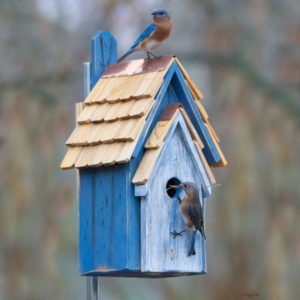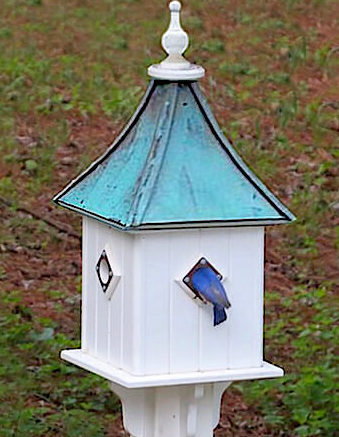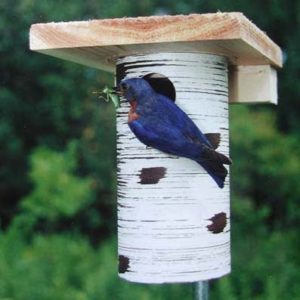-
Barn Swallow Nest Cups are Back!
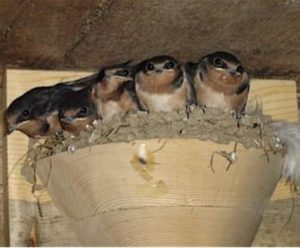 Like hummingbirds, barn swallows will soon be returning to previous nesting areas (and new ones too). The behavior is akin to a faithfulness or loyalty to favorable locations from previous seasons.
Like hummingbirds, barn swallows will soon be returning to previous nesting areas (and new ones too). The behavior is akin to a faithfulness or loyalty to favorable locations from previous seasons.Since the birds are extremely beneficial to have around the yard, gardens and barns for natural pest control, you can easily entice them with our barn swallow nest cups.
Handmade set of wooden nesting cups closely resemble a barn swallows’ own digs! Simple to hang, they’re best placed up high near roof lines or eaves and most definitely sheltered from the elements.
Do they really work? You bet! Just check out some of the on-page reviews over the years. And especially Leda’s testimonial with pictures for living proof!
Swallows adore the sturdy artificial home and folks are thrilled as the nest cups allow the birds to be coaxed from inconvenient nest spots- a common occurrence around stables or barns. Nine times out of ten, the birds will use the cups for their second brood… and return next year to use them again.
Don’t be too surprised if an Eastern phoebe takes up residence either… they like the nest cups too!
-
Now’s the Time for Bluebird Houses!
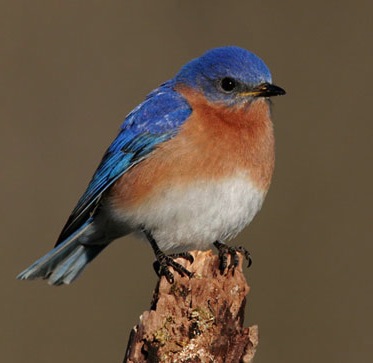 They’ve started already, in the Southeast and further North, lots of folks are reporting first nests and first eggs laid in their bluebird houses. It’s one sign of springs’ arrival… bluebirds are house hunting!
They’ve started already, in the Southeast and further North, lots of folks are reporting first nests and first eggs laid in their bluebird houses. It’s one sign of springs’ arrival… bluebirds are house hunting!Bluebird landlords (or folks who monitor bluebird houses) are eagerly awaiting the first clutches. Weather can be a tricky factor with late winter/early spring broods as natural food is still scarce. Bluebirds’ diets may be supplemented with meal worms, suet, shelled peanuts and sunflower hearts to help brooding birds cope with frigid or extremely wet weather.
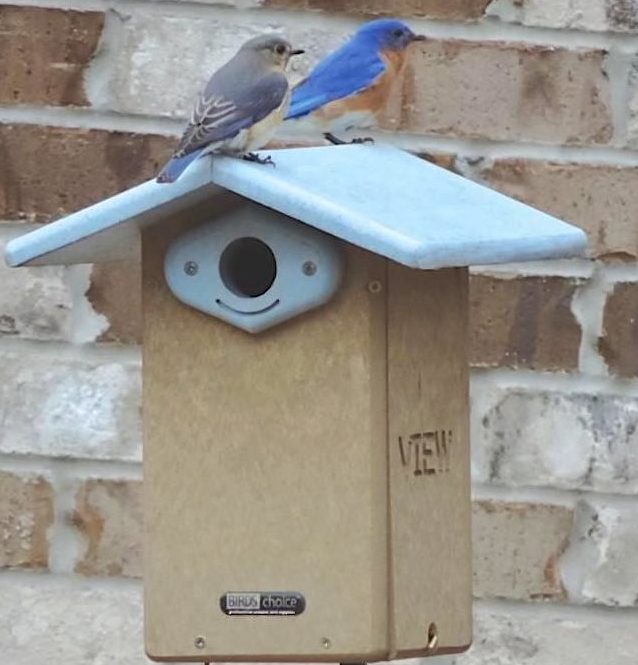 Find the most handsome bluebird houses for all tastes, most are approved by the North American Bluebird Society (NABS). A house with side door makes for easy monitoring, as does the famous Gilbertson Nest Box.
Find the most handsome bluebird houses for all tastes, most are approved by the North American Bluebird Society (NABS). A house with side door makes for easy monitoring, as does the famous Gilbertson Nest Box.High quality and USA made, find durable cedar, recycled plastic (or poly-lumber) and stunning vinyl bluebird houses with copper roofs. Standing the test of time, bluebirds will return to these fine digs year after year should fledges be successful.
Yes… monitoring is highly recommended to help keep bluebirds safe.
No… you won’t disturb them if you tap on the birdhouse first, steer clear of busy feeding times (dawn and dusk) and especially refrain prior to fledge time (about 19 days after hatching). The latter may scare babies into an early fledge for which they are not fully prepared.
Check out the website Silais.org for a wealth of information on bluebirds and other native cavity-nesting birds. Every question will be answered on this addictive site!
If you don’t have a blue bird house up yet… don’t fret. But now’s the time! Blues will brood two, three and sometimes even four clutches per season. Open space is best with tress or fence line nearby for bluebirds to perch, hunt insects and guard their nests. Fresh water in a birdbath always entices feathered friends too!
So what are you waiting for? It’s time to get your bluebird house on!

